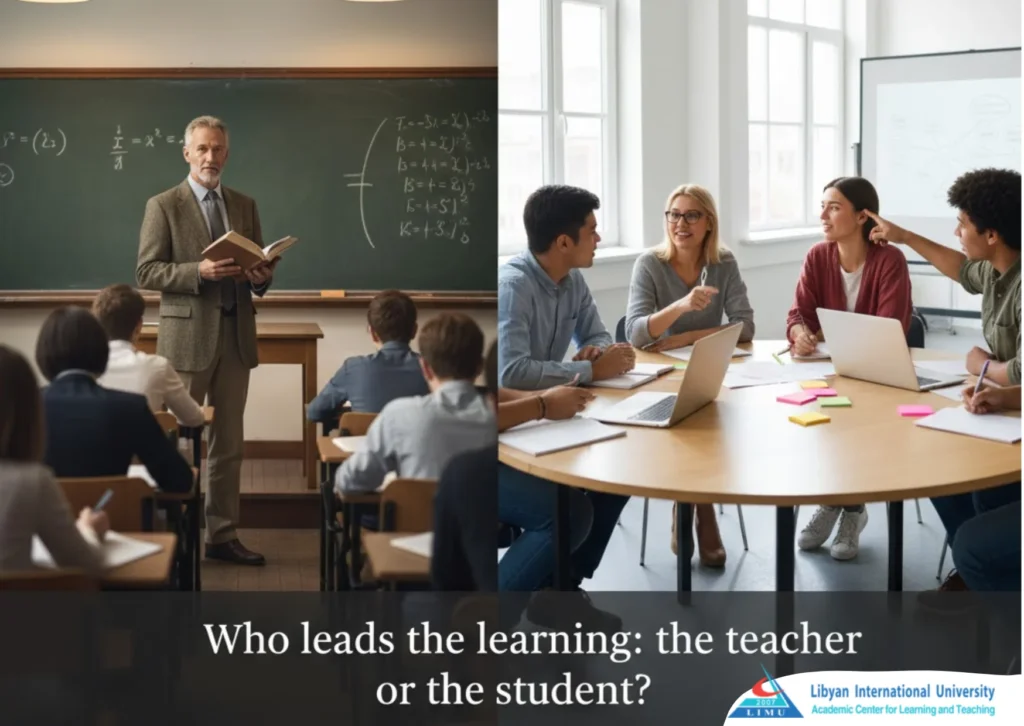Dr. Moamer Gabsa
Education has always evolved with society’s needs, shifting from knowledge transmission to skill development and learner engagement. At the heart of this evolution lies a fundamental pedagogical question: Who drives the learning process—the teacher or the student? Understanding the difference between teacher-centered and student-centered approaches is essential for educators striving to create effective learning environments.
Teacher-Centered Approach
The teacher-centered approach, sometimes called the “traditional” approach, places the teacher at the center of the educational process. In this model:
– The teacher is the primary source of knowledge, guiding students through lectures, demonstrations, and structured lessons.
– Learning is often passive, with students expected to listen, memorize, and reproduce information.
– Assessment focuses on factual knowledge, often through exams and quizzes.
This approach has several strengths. It is efficient for delivering large volumes of information, maintaining classroom discipline, and ensuring coverage of a standardized curriculum. However, it may limit critical thinking, creativity, and active problem-solving skills, as students are often relegated to passive recipients rather than active participants.
Student-Centered Approach
In contrast, the student-centered approach shifts the focus from teaching to learning, empowering students to take an active role in their education. Key features include:
– Active learning, where students engage in discussions, group projects, problem-based learning, and inquiry-based activities.
– Personalized learning experiences, allowing students to explore topics that interest them and learn at their own pace.
– Development of higher-order thinking skills, such as critical analysis, synthesis, and reflection.
This approach encourages autonomy, collaboration, and deeper understanding, preparing students for real-world challenges. However, it requires skilled facilitation, more time for planning, and resources to support diverse learning styles.

Choosing the Right Approach
The debate is not about choosing one approach exclusively but understanding how to balance both. For example:
– Foundational knowledge may benefit from teacher-centered methods.
– Application, analysis, and problem-solving are better suited to student-centered strategies.
Modern educational frameworks often advocate for blended approaches, where the teacher guides learning while students actively construct knowledge, making education more engaging and effective.
Conclusion
Both teacher-centered and student-centered approaches have distinct roles in education. The key for educators is to adapt their strategies to the learning objectives, content, and student needs, fostering environments that are both informative and transformative. By thoughtfully balancing these approaches, educators can empower students not only to learn but to think, question, and innovate.
October 2025